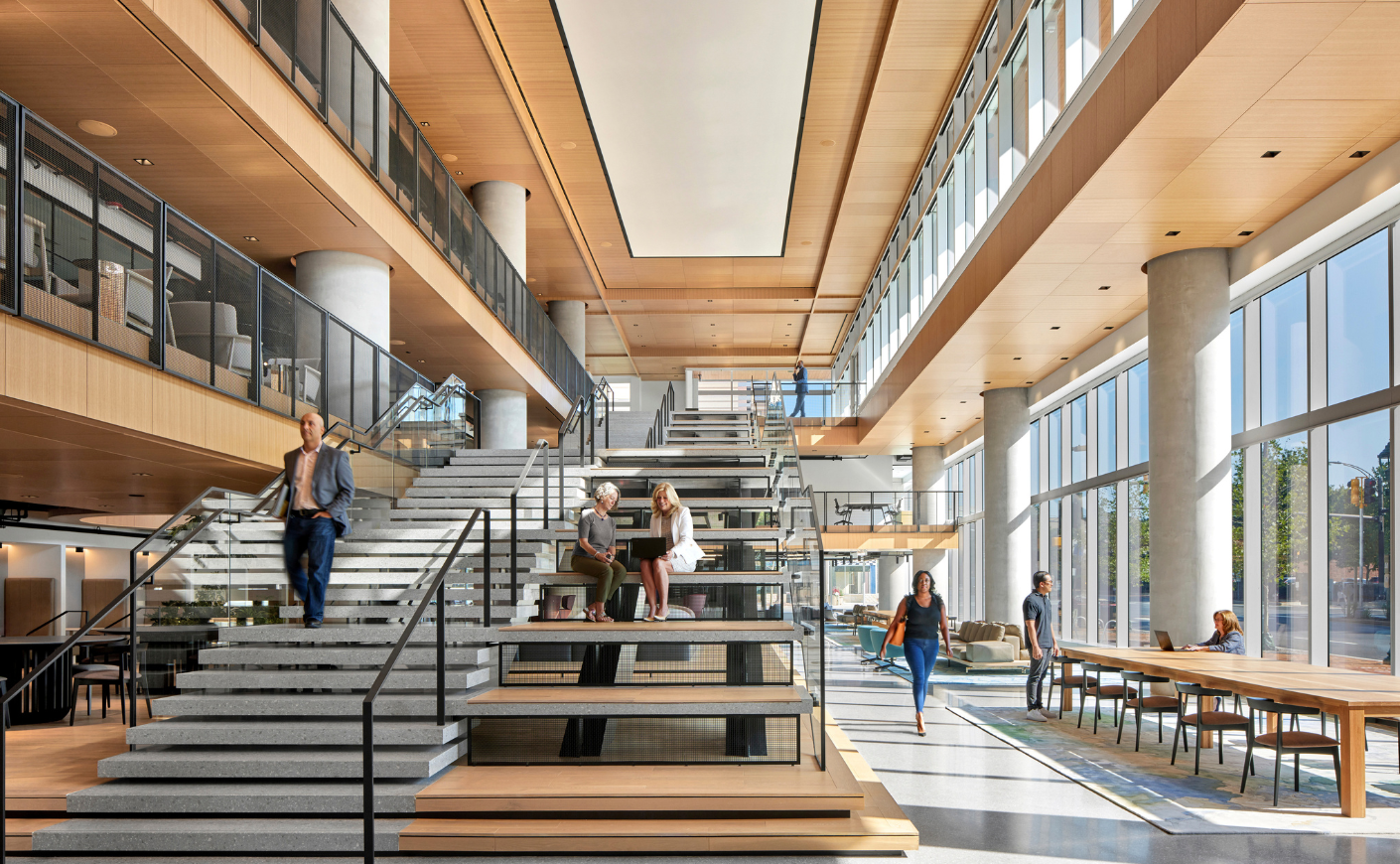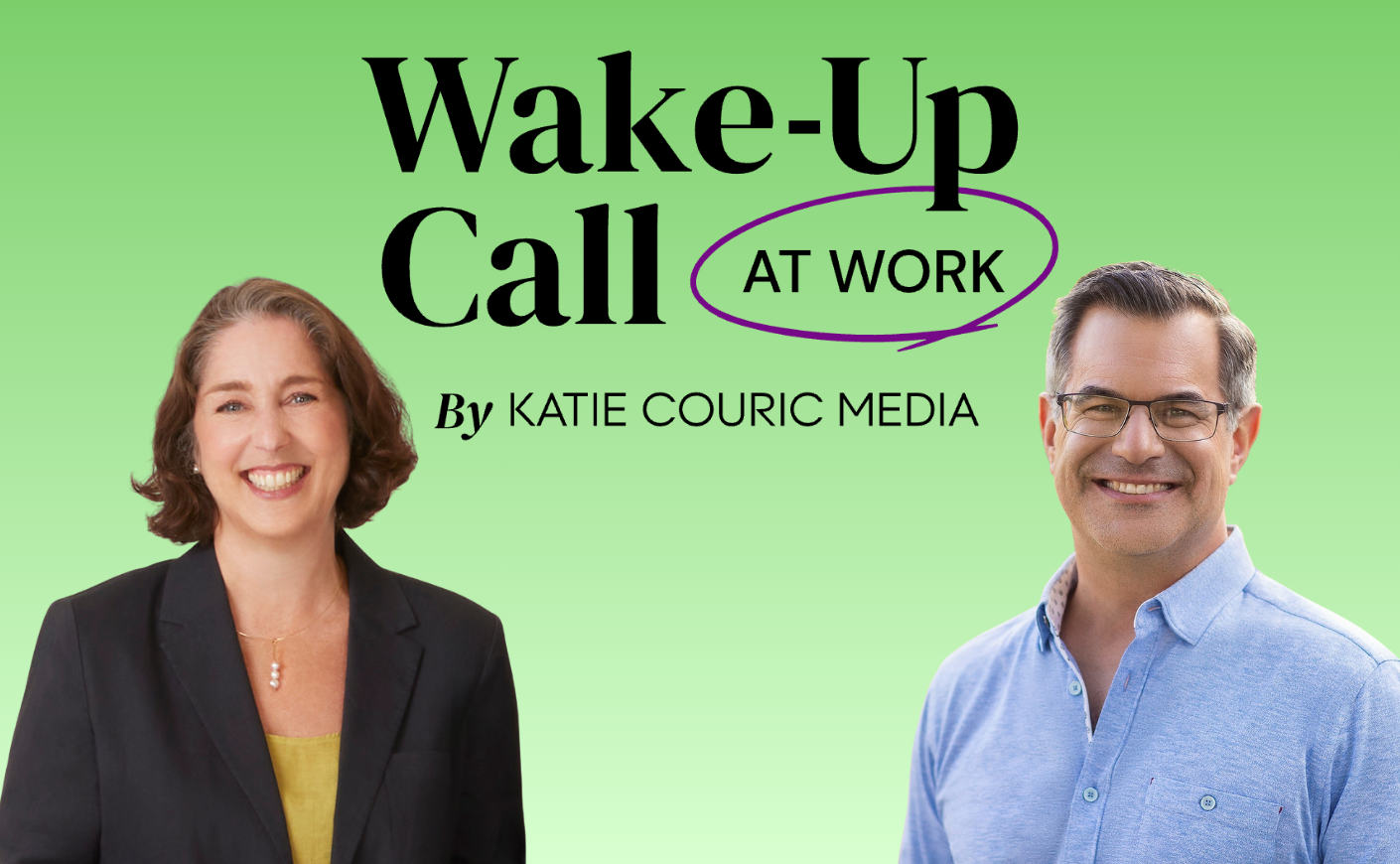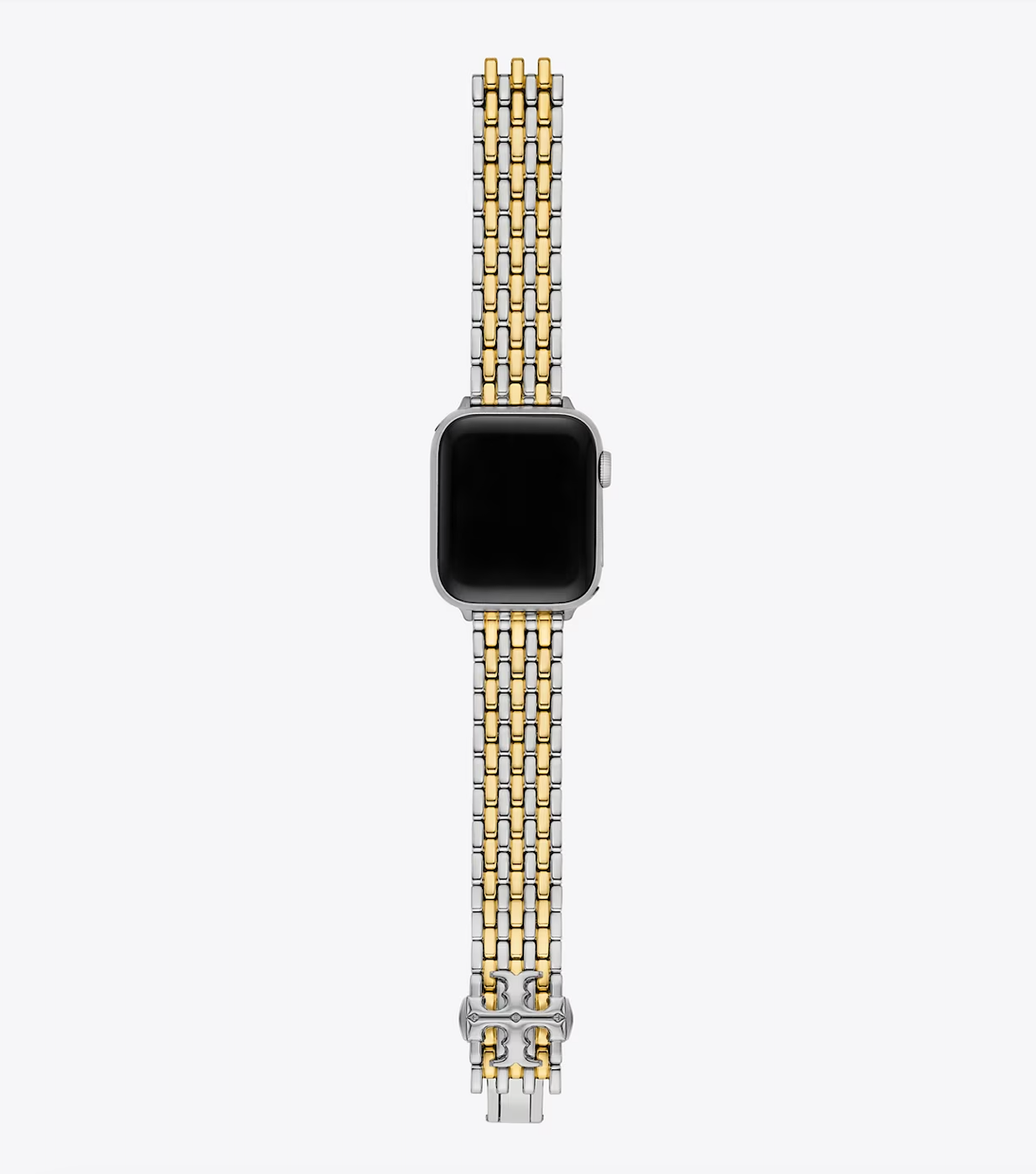If you haven’t heard of Gensler, you’ve certainly seen its footprint. Over the past 60 years, the prolific architecture and design firm has helped create dozens of major landmarks, from Terminal One at San Francisco International Airport to Shanghai Tower, the world’s third-tallest building. The company is powered by more than 6,000 employees spread across 56 offices — and in our LinkedIn newsletter, Wake-Up Call at Work, we’re sharing insights from the two people in charge of wrangling this sprawling global workforce: Elizabeth Brink and Jordan Goldstein.
The duo took over in 2024, replacing another set of co-CEOs who had led the company for nearly 20 years. We spoke to the pair about why Gensler continues to return to the co-leadership model, how to make it work, and their take on the future of design and urban development.
Katie Couric Media: Gensler has long embraced a co-leadership model. What makes this approach work so well for the firm — and how do the two of you carry it forward?
Brink: We believe strongly that diversity of thought fuels innovation. When two leaders work together, bringing different perspectives, different fields of expertise, and different passions to the table, we can think more deeply about challenging issues from multiple angles. We can also focus on key priority areas and accomplish so much more than just one person could.
Goldstein: We have over 300 co-leaders on our Gensler team, including at the helm of every region, office, and practice area. This leadership model opens up greater avenues for voice and creativity while giving us incredible speed and agility — which is so key, and so rare, for a company of our scale.
How do you lead together? Do you split responsibilities or share in all the decision making?
Goldstein: Both! We’re in constant communication, with each other and with our executive leadership team. We believe that over-communication is key to ensuring that a highly networked firm like ours can stay in sync across the globe, with a proactive focus 24/7. We have an incredibly deep bench of leaders here at Gensler, and we make decisions together. From a geographic perspective, we’ve set up an approach for global oversight where we each take “first position” on five of our regions. And Elizabeth and I talk multiple times every day (including weekends).
What would you consider each other’s best leadership quality?
Brink: Jordan is an incredibly committed champion of bold design ideas and creative conviction. He is always pushing our teams to elevate their designs and to take the execution of those designs to the next level — and he’s helped develop an entire next generation of design leaders across the firm who are also champions of creativity.
Goldstein: Elizabeth radiates positivity. She approaches everything with a smile, no matter how challenging it is. She’s particularly strong on the people and talent side of our business. It helps that we really know each other’s “aces and spaces.” When we were first tapped to lead together, we sat down and shared what each of us saw as our strengths, as well as the areas where we felt we weren’t as strong. That session together was so critical in figuring out how to craft a leadership style that is “1 + 1 = 3.”
What office design trend are you most excited about — and how will it impact the future of work?
Goldstein: We’re really excited about a range of new AI integrations across our design work, as a way to elevate and enhance our people’s creativity, explore optionality, and streamline processes and workflows. We see AI interfaces and applications as powerful new tools in the designer’s toolbox rather than as a substitute for human creativity. It’s about amplifying design’s power to shape the human experience.
Brink: Yes, the human experience and the impact it will have on the future of work is really the critical differentiator for design right now. The best workplaces give people choice in their surroundings — whether they want a buzzy, active zone that invites spontaneous conversations and serendipitous interactions, or a quiet, private space where they can deeply focus on solo work. Our research has shown that while remote work is convenient for some, many have a deep yearning to be in a communal place that makes them feel inspired, empowered, and like they belong.
If you could implement one bold design shift in every major city tomorrow, what would it be and why?
Brink: Creating more affordable housing of varied types and sizes within our downtown cores would fundamentally shift not only the experience of being in our cities — by creating vibrant mixed-use communities where people can live, work, and play — but also would help alleviate many issues that lead to housing insecurity and homelessness.
Goldstein: It certainly seems that people are craving in-person experiences more than ever. With that in mind, transforming single-use sports venues in our downtown areas into the anchors of vibrant entertainment districts is a powerful way for cities to supercharge economic growth and revitalize their urban cores. I’d love to see more cities re-envision their stadiums and arenas as key parts of 24/7 mixed-use entertainment districts — true civic destinations with amenities and activities that appeal to audiences of all kinds.
What’s your all-time favorite Gensler design?
Goldstein: There are so many stunning, game-changing projects that come to mind, like the Shanghai Tower or the new Under Armour Global Headquarters. However, one that stands out for me is more personal. We recently completed Marriott International Headquarters in Bethesda, Maryland. It’s a significant project in scale and impact, taking Marriott and their 30-plus brands from the suburbs and giving them a new urban home with an adjacent flagship hotel right in my hometown. Our team worked collaboratively with Marriott to design and deliver an incredible urban campus. What makes it even more special is that my first job while in high school was as a waiter at a Marriott hotel. On top of that, my wife works for Marriott, and both of our kids went to Marriott’s onsite daycare when they were little (they’re grown now). So it’s a full circle moment.

Brink: One of my personal favorite projects is Terminal One at SFO airport. It’s amazing to me how design has completely transformed the experience of being in an airport to one that is uplifting and invigorating. The natural light, incredible art, and inviting, comfortable spaces to rest truly elevate the travel experience and have raised the bar for airports around the world.
If you could hire one fictional character to join your company, who would it be and why?
Brink: I’m a big fan of Mary Poppins, who was one of my first role models from early childhood. I’ve always admired how she calmly addresses all types of challenges, getting so much accomplished in just the right way, and — even more impressively — how she helps others become the best version of themselves in the process. And she always does it with fun and style! I think every organization could use some Mary Poppins perspective, not to mention that incredible carpet bag filled with just the right solution for every situation. She is true magic.
Goldstein: I’m a James Bond fan, so that character comes to mind first. Beyond Bond’s cool, calm, and collected demeanor, I appreciate how the Bond films give such a flavor of global cities, and how architecture is featured so strongly in those amazing action sequences. I’m also a car guy, so the combination of iconic architecture and spectacular cars is a winner in my book.
I have no idea how Bond would handle a design project, but let’s see Bond present the next great design innovation to some of our global clients. Instant approval?
Want to hear more from the best in business? Subscribe to our LinkedIn newsletter, Wake-Up Call at Work, for more thought-provoking interviews.













